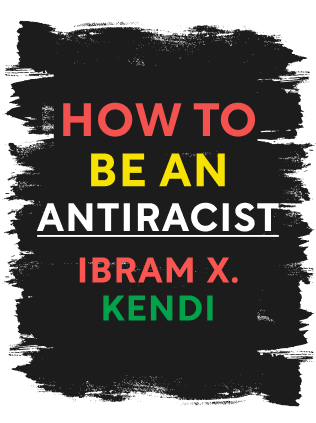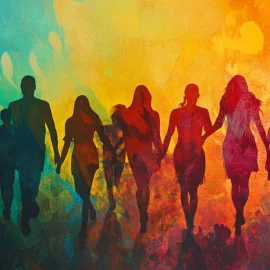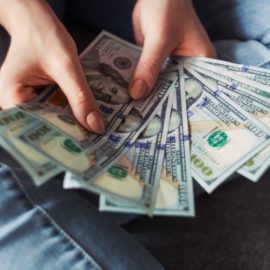

This article is an excerpt from the Shortform book guide to "How to Be an Antiracist" by tIbram X. Kendi. Shortform has the world's best summaries and analyses of books you should be reading.
Like this article? Sign up for a free trial here .
What is the culture of poverty theory? How does it differ from the cycle of poverty?
In How to Be an Antiracist, Ibram X. Kendi emphasizes the importance of understanding racist policies and their impacts. The culture of poverty theory explains Black poverty through cultural racism, while the cycle of poverty is about the racist policies that keep poverty in place.
Read more about the culture of poverty theory versus the cycle of poverty.
The Culture of Poverty Theory
Over the years, many people have tried to explain why people are poor. The real reason is policy—policy creates an environment in which no matter how well poor people behave, it’s difficult for them to escape poverty.
However, plenty of people came up with other incorrect racist and classist explanations. In the 1960s, Oscar Lewis, an anthropologist, thought that Black poverty was related to culture—children raised by poor parents copied their behaviors, which resulted in the children also being poor. This was the culture of poverty theory. Other people thought poverty was related to welfare—welfare annihilated dignity and turned people into “animal creature[s],” according to Barry Goldwater, a US senator.
Black sociologist Kenneth Clark addressed the culture of poverty theory in 1965 in his book Dark Ghetto using the oppression-inferiority thesis. In earlier times, people thought slavery or segregation were responsible for bad Black behavior and inferiority. Clark wrote that now Black poverty and “ghetto” life were responsible. Kenneth Clark was aware of racist policies in existence at the time, but he subscribed to class racism. He thought that because he had escaped the ghetto and become wealthy, Black people who hadn’t were inferior, and their inferior culture kept them in poverty.
As opposed to the culture of poverty theory, the cycle of poverty accurately roots poverty in policy—it’s policy, not culture, that causes exploitation, lack of opportunity, and low income.
Ibram’s Experiences With Class Racism
When Ibram moved to North Philadelphia to attend Temple University for graduate school, he chose to live in Hunting Park, which was allegedly one of the most dangerous neighborhoods in Philadelphia. It was part of the “ghetto.”
Ibram wanted to live there because he had the idea that poor Black people were the most authentic Black people. In his mind, poverty, criminality, sex, and gambling in an urban setting were the defining features of the most authentic Black community. At the time, he thought culture started at the bottom and filtered up, and he wanted to be more authentic himself. He now realizes that in identifying the culture of one race-class as superior to another, he was being racist.
History and Invention of Class Racism Explain the Culture of Poverty Theory
Capitalism is inherently racist because racism and capitalism developed hand in hand. Both came into being at the same time, during the slave trade. Enslaved people were sold for money, and then slaveholders used their labor to make money, power industrial revolutions, and finance empires.
What Is Capitalism?
Historically, and even according to defenders of capitalism who call everything from ending poverty to protecting the environment “anticapitalist,” capitalism is the exploitation of people and the environment, and the freedom to prioritize self-interest over anything else.
Some people, such as Elizabeth Warren, a US senator, define capitalism differently. Warren defines capitalism as a market that has rules, and the rules are critical to her definition. Some people call her anticapitalist because they don’t like her rules. Ibram agrees that the system she describes might help reduce inequity, but he doesn’t think the system should be called capitalism because it doesn’t match the more accurate definition of capitalism above.
Antiracist Anticapitalists
Communists or socialists, while they’re not capitalist, aren’t necessarily antiracist. For example, in 1901 the Socialist Party of America wouldn’t take an anti-lynching position because it didn’t want to lose racist White supporters.
In the 1920s, Writer W.E.B. Du Bois started reading Marx, saw that the Great Depression had a larger effect on Black than White poor people, saw that the New Deal wasn’t helping the inequity, and wrote about antiracist anticapitalism, inspiring others to start looking into the divides between class and race.
The antiracist anticapitalists went into hiding or prison in the 1950s, when fear of communism was at its strongest, but they came out in the 1960s and have reappeared today, for example, in the Occupy and Black Lives Matter movements.

———End of Preview———
Like what you just read? Read the rest of the world's best book summary and analysis of Ibram X. Kendi's "How to Be an Antiracist" at Shortform .
Here's what you'll find in our full How to Be an Antiracist summary :
- What racism is and how it evolved
- How you might have subtle racist thoughts and not even be aware of them
- Why being "not racist" isn't good enough






